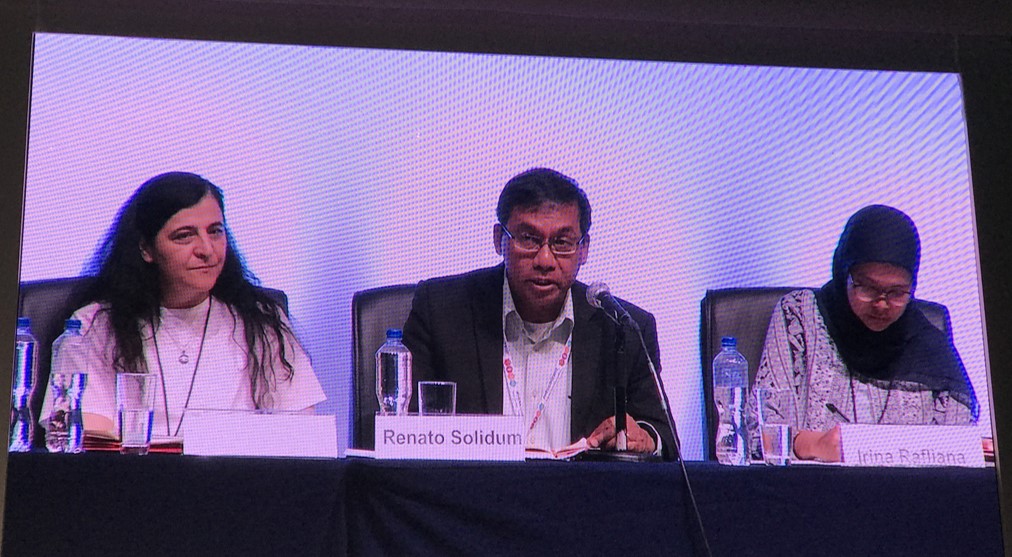PHL Works to Become a Science, Technology and Innovation Hub on DRR, Announces Initiative to have Innovation Award for S&T for DRR

Honorable Renato Solidum (center), Science and Technology Department Undersecretary for Disaster Risk Reduction and Climate Change, co-chairs the Working Session on the Contribution of Science and Technology to Achieving the 2020 Sendai Target at the Global Platform on Disaster Risk Reduction in Cancun held last 22 to 26 May 2017.
03 June 2017 CANCUN, MEXICO – In leading the discussion on the Working Session on the Contribution of Science and Technology to Achieving the 2020 Sendai Target at the Global Platform on Disaster Risk Reduction in Cancun, Mexico, the Philippine Government announced that it is working towards becoming a Science, Technology and Innovation (STI) hub on disaster risk reduction (DRR) and will initiate to have an Innovation Award for Science and Technology for DRR and Climate Change Adaptation and Mitigation (CCAM) in order to ensure the promotion of innovation on DRR and to have a more participative approach on various aspects of DRR and CCA.
Honorable Renato Solidum, Science and Technology Department Undersecretary for Disaster Risk Reduction and Climate Change, announced this when he shared how the Philippine Government is contributing in the field of science and technology in the achievement of Target E of the Sendai Framework. He underscored the need to have a more open engagement between the Philippine Government and its international partners in the work of the government on STI.
“Science and Technology plays a critical role in various aspects of disaster risk management, ranging from hazards and risk assessment, monitoring and forecasting, communication of warning and hazards and risk information, appropriately responding prior to and after disasters, and adapting to climate change, and these need the collaboration of various scientific disciplines nationally and internationally,” Undersecretary Solidum said.
The working session focused on how governments and stakeholders working in the science and technology field are contributing in achievement of Target E of the Sendai Framework with particular focus on illustrating how appropriate global, national and local disaster risk assessments and scientific analysis have been used to inform disaster risk reduction planning and monitoring at national and local levels. Concrete examples of solutions to bridging the gap between science and policy-making in disaster risk reduction local and national planning processes were presented.
The session built on the outcomes of the UNISDR Conference on Science and Technology held in January 2016 in Geneva that launched the UNISDR Science and Technology Partnership and Roadmap.
It may be recalled that to achieve Target E of the Sendai Framework that focuses on national and local disaster risk reduction strategies, countries will need to access and use credible and robust multi-hazard risk assessments. This includes evidence-based risk information provided by and developed together with the science and technology community.
The Sendai Framework calls on the science and technology community to focus on understanding disaster risk factors and scenarios, support action by local communities and authorities, and enhance the interface between policy and science for decision-making. END
